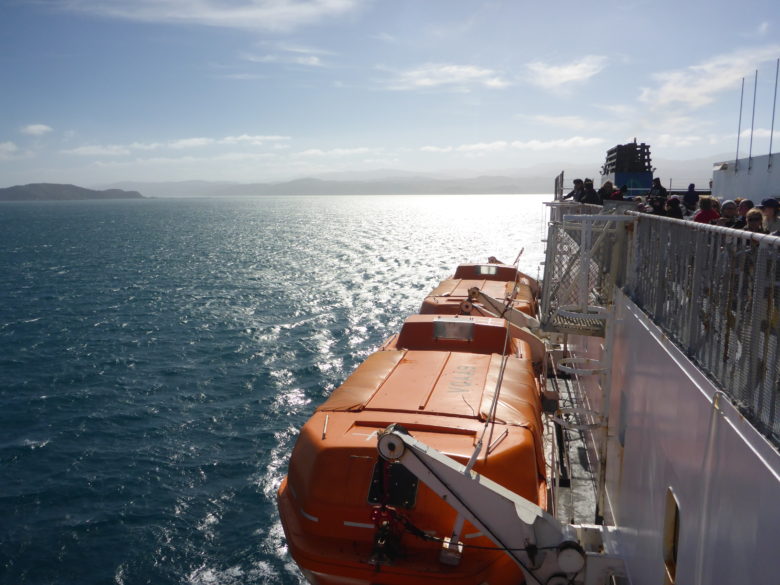Our crossing of Cook Strait was mercifully calm and sunny and one yacht passed us in the opposite direction being blown by a nice south westerly breeze. Queen Charlotte Sound looked stunning bathed in afternoon sunshine.

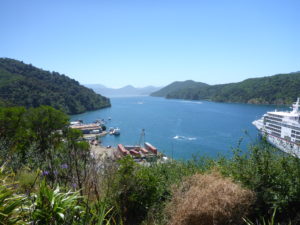
As we drove off the ferry and headed through Picton in a westerly direction the din of the cicadas drowned any other noise. Tree smothered hills rose dramatically all around from the bay lined shores of the sound. The road was very bendy and steep but the car hummed on up and around until we descended to our camp, nestling in a tiny bay, the site extending up the valley where we pitched and along the shore front where everyman and his family played, swam, jet skied and kayaked in the warm sunshine.

Number five camp at Momorangi and ten minutes of elevated joy
I wondered how people who came here 50 or so years ago to live feel about the rate of change in Europe compared to here, did they yearn for what they had left behind?
Similarly how does the Maori lady, picnicking with her family on the foreshore, deal with the fact that not so long ago her ancestors lived here in tribes, wandering through the lush valleys, before European officialdom robbed them of such freedom. Maybe some don’t care because what they have is peace, freedom to enjoy the area, their family around them and reasonable health care, which is what most of us wish for anyway but I am being trite to suggest they are not deeper thinkers.
I trimmed Rob’s hair, al fresco after our tent was pinned down yet again. Then we explored the shoreline, shoals of whitebait glistened as they turned their silver bodies to the sun and small pipefish busied themselves. We relaxed under our sunbrolly beside our new table and just hoped the weather would hold for tomorrow, when we planned to inflate the kayak.
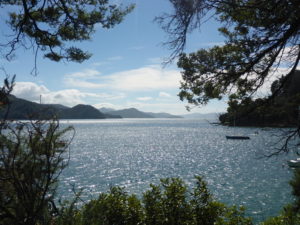
The best laid plans of Rob and Barb do not always come to fruition and the next morning blew them right away with a fresh wind, so we went for a charming walk in the native bush behind the camp. Trees were labelled and there were frequent boards showing pictures of local birds and bugs. Rob spun the handle on a silver cylinder and then turned a dial to a particular number to hear the birdcall of that species.
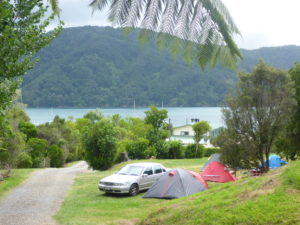
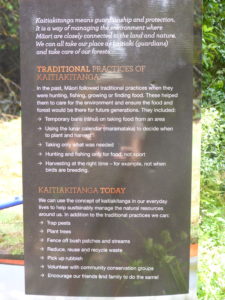
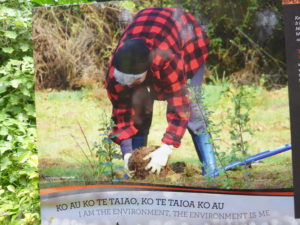
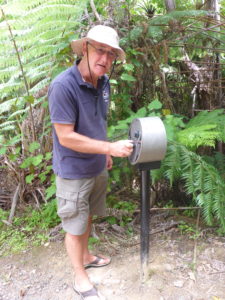
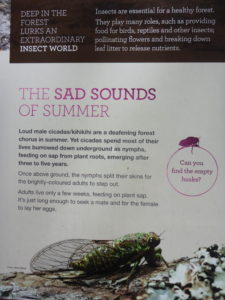
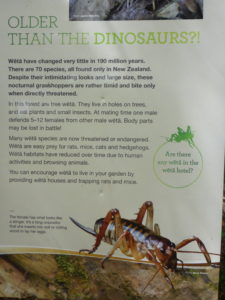
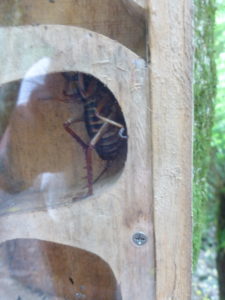
The next morning was wet as we expected. We sat in the camp kitchen after packing up and shared our neighbours’ porridge as the lad had cooked too much. I do that sometimes, under-estimating how much the oats swell while cooking. We like porridge as it is so digestible and sustaining, cheap too.
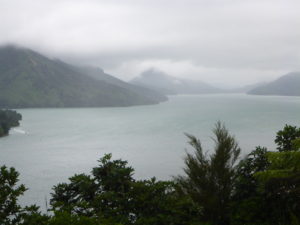
Victoria (Rob’s name for the Volvo) took us serenely along the Rai Valley and through the Mount Richmond Pine plantations and native bush. The gorge alongside was deep and every now and again were narrative road signs warnings us to keep a lookout for motor cyclists. The first one showed a white haired man wearing a T-shirt with grandad written across his chest, standing next to his bike. In the next one the motor cyclist had Dad written across his chest and in the final one the lad had Son written on his T-shirt. Yes, a thought provoking message that whole families can be effected when the worst happens. Rob passion for motor biking means he is always vigilant.
We had two main reasons for visiting Nelson. First we had a feeling that our sailing friends, Paul and Jane were nearby in Nora J. They were two of our line handlers as we came through the Panama, if you remember, and we have kept in touch since. Secondly, why did someone name the new town established here in the 1840s ‘Nelson’?
Our little tent was in place in the tiny tent area of The Top 10 Nelson City site, our 6th camp, as we parked outside the I-Site to start our enquiries. In answer to the second question, “I have no idea,” said the young lady, “I would have to go and look it up in the library.”
Next stop, The Museum. The gentleman behind the desk was no more helpful, “You are English, yeah, you’ve heard of Nelson?” I persevered, “but why name a whole town after him when he never came anywhere near here?”
“Your guess is as good as mine.” Determined now that we would not give up we continued on up Trafalgar Street, another mysterious reference to our trusty naval Admiral, a pleasant shared area where there were no pavements and cars were trusted to behave themselves when it came to the likes of us. We noted a few interesting looking bars in substantial, well-built buildings and thought we’d come back that way, but first onward and upward to the Cathedral.
Nelson is a very cultural place. The architecture is a pleasing mix of traditional classical, art deco and modern and suggests there has been considerable wealth in the way of ideas and money since the inception of this town, the birthplace of NZ Rugby.
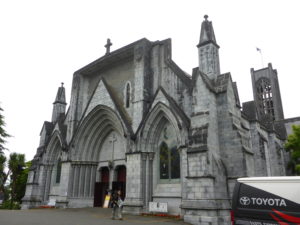
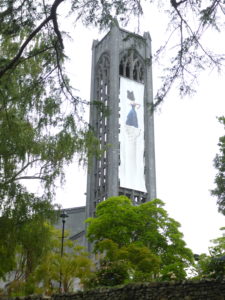
The Cathedral doors were closed as a recital was in its last 30 minutes of performance; all part of the current festival of classical music held both here and in the Theatre Royal. Reading one of the information boards outside while we waited I learned that young Commander Arthur Wakefield RN and his brother Edward both had a vision for the Utopian colonisation of New Zealand.
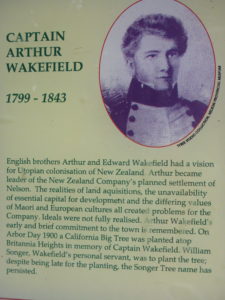
Born in 1799 he was 6 years old when the news of the death of Nelson along with his victory at Trafalgar was brought back to the UK in 1805 and no doubt the esteem he held for Nelson was an influence both in his joining the navy and naming this beautiful place. He was the leader of The New Zealand Company’s planned settlement of Nelson. Inside the Cathedral is a stone plaque in his memory which states he ‘planted the settlement of Nelson.’
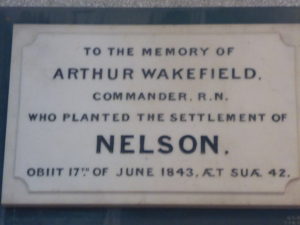
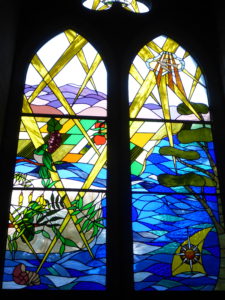
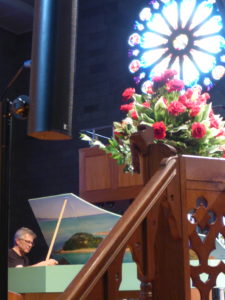
Standing on the Cathedral steps gave us an elevated view of Nelson life going on as usual. Always good to know.
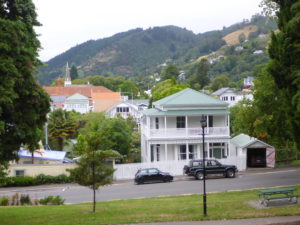
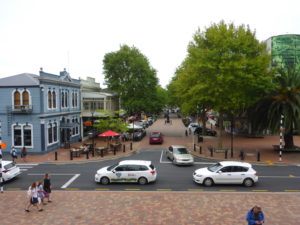
Enquiry number two was complete. So off we went to the marina to see if Nora J was around. The marina manager brought us good news “They are still here, planning to leave tomorrow.” Nora J’s cruising chute was hanging from the masthead, drying in its bag, but sadly her crew were not on board. We left a note with our phone number and went to Mac’s bar in Trafalgar Street for some beer and fish and chips, just for a change you understand.

The building had once been a legal firm and was full with beautifully carved doorways and panelled walls. Near to where we were sitting was a full door sized safe door, behind which the town’s legal documents, deeds, wills et al would once have been stored. The weather rained on outside as we tucked into supper and a pint of Mac’s Bossy Red Bitter.
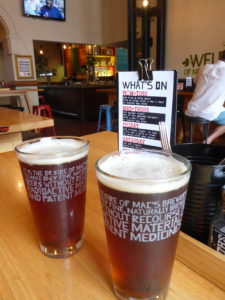
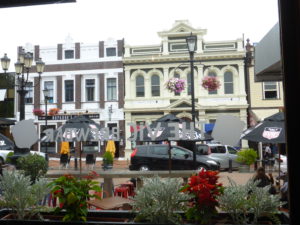
We had just turned back into the camp when Jane called. They had spent the day dropping their car off at Havelock and catching the bus back to Nora J. We must have passed each-other on the road! Our paths were not destined to meet quite yet. They would sail to Havelock, leaving Nora J there before driving to Christchurch and then home to Hokitika, on the west coast and where we will visit them early on in March. Can’t wait to catch up on their news.
There are lots of places of interest to tempt the visitor around here but we have to be selective and we exclude places like heritage towns and breweries, as we have visited them before elsewhere. However we have never experienced a Skywire Ride, where four people alongside eachother are strapped into ‘child-like car seats’ and flung across a glaciated gorge covered in native trees at, in our case, 88.8km/hour.
It is the world’s longest Flying Fox at 3.2kms and is a lovely way to spin across the tree canopy and see distant views of Nelson, Cable Bay and Delaware Bay with the Tasman Sea beyond. It was still early in the day and a fresh, cold southerly was blowing from Antarctica. Our guide, Nick, let us choose our beanies to keep our ears warm on the flight.
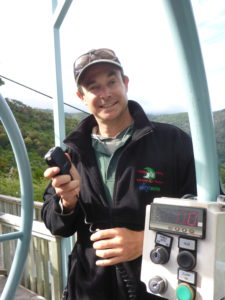
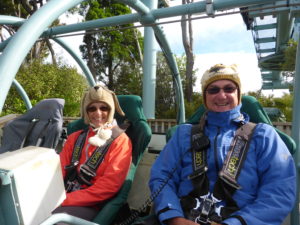
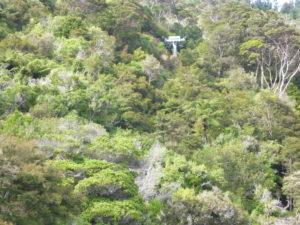

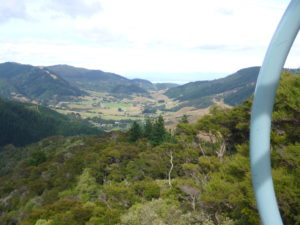
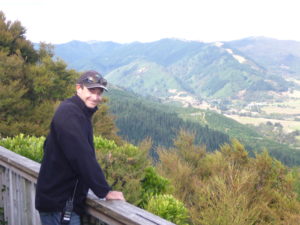
Just as interesting as the flight was the journey from the arrival car park up and down the narrow winding track in a 4×4 driven by our well-informed guide from Australia.
He stopped twice, to let us see the Tiki that would keep us safe and to wonder at two Matai trees; giants of the forest. The male is 1800 years old and the straight trunked female is 700 years old (pictured). They are growing in a sheltered grove and are the oldest in NZ. Down the hill was the spikey remains of one specimen that was over 2000 years old and 40 metres tall before the canopy and top part of the trunk were twisted off in a storm.
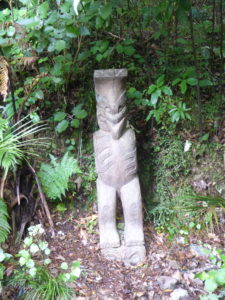
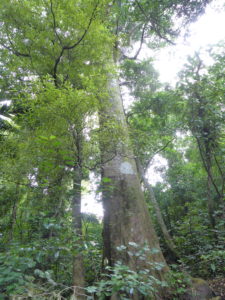
Each tree supports other trees and ferns that grow on it and feed off the moisture from the rotting interior. The outer trunk is kept clean as it sheds harmful fungi and mould on small platelets of bark, just like the Kauri tree.
The beautiful Cable Bay tempted us in its direction after our elevated adventure. We parked Victoria on the Granite pebble causeway across the bay and saw the mast of a single yacht striking seaward from Nelson into a stiff breeze. Could it have been the Nora J? It was a real possibility and we will find out later.
![]()
Back in town, we booked our next campsite near the Abel Tasman National Park through the I-Site and while looking around the gift shop next door discovered a picture of our National Park mystery bird, on a cushion cover of NZ birds. Remember I said they were about the size of our UK wrens, well they are NZ wrens and like the NZ Sacred Kingfisher are just a little bigger than our version.
February 9th. After a cold night comes a crystal morning as we drive the road to Marahau on the doorstep of Abel Tasman.
At last the combination of a power point and somewhere accessible to write in the wee quiet hours. I apologise for it being so long since my last blog to you all.
We joined the rush hour to leave Nelson but soon turned off into the Montere Hills through fine French wineyards growing on clay soils threaded with gravel giving the wines a certain uniqueness of texture, well that’s what the brochure said.
This is also NZ’s prime hop growing area and these spindly plants were wound upward to three metres on strong string. Baby doll sheep (their ancestors the pretty smiling small sheep from the English South Downs in Sussex) were efficiently nibbling the grass and lower leaves to keep the vines in good shape as we sped westwards.
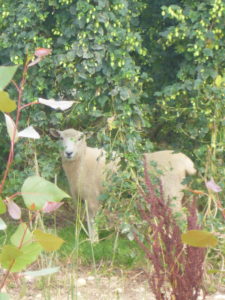
We had taken a detour to see them so now we were back on the Highway 6 where Redwood trees, Pine plantations and blackcurrant farms pleased our eyes.
Stopping for a coffee alongside the calm sparkling Tasman Bay we cast our minds back to when and here, where early French settlers had arrived and Arthur Wakefield landed to set up the town he named Nelson in honour of his late hero.
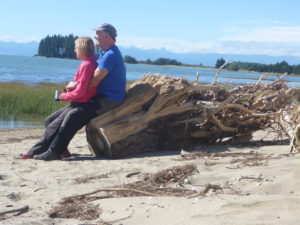
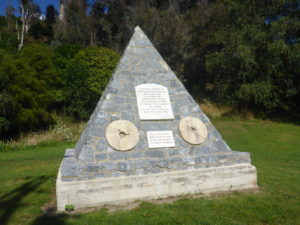
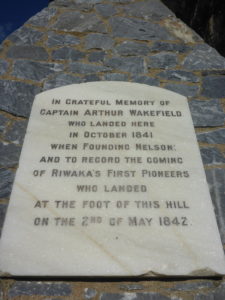
An overgrown railway track nearby was once used to transport grey marble from a hilltop quarry to build the new Cathedral in his city, long after he was killed in a skirmish with Maoris and settlers over land in the Wairua Valley. The New Zealand Company in London had sold much New Zealand land that did not exist and pressure was on the Governor to find more for the furious and frustrated settlers, so the Maoris were robbed of land by force in the process.
We booked into MacDonald’s Farm, our 7th Camp and pitched alongside a rushing river with the mountains of Abel Tasman offering protection. The weather was lovely but any breeze was chilly. The Alpaca’s in their thick coats weren’t bothered and the silky black coated piglets were far too busy play-fighting to notice.
Anywhere else in the world the sight of an aluminium motor boat full with people holding cameras and sitting on a trailer being towed by a tractor might look a little odd, but not here. As our bay was very shallow and flat the tide goes out a long way so we had to be transported from the company office to a wide concrete ramp into deep water. Two tractor trailer combinations backed down the ramp at the same time, the Honda engine was lowered in and started, we floated off and started on our mini cruise to Anchorage Bay, about 12kms along the 52km Abel Tasman walking track.
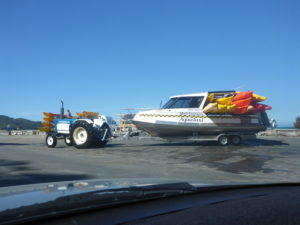
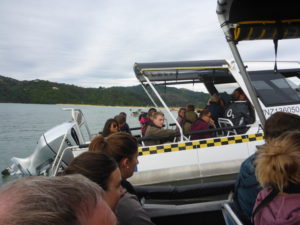
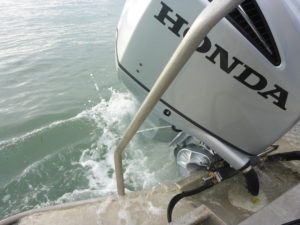
Along the way our skipper/guide took us to see split apple rock, with its attached Maori legend. Then we disturbed some fur seals languishing on the rocks smug in the knowledge that their near extinction by man is now over and they are safe to grow in numbers.
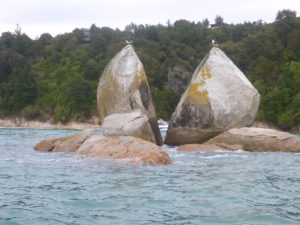
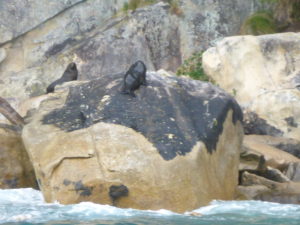
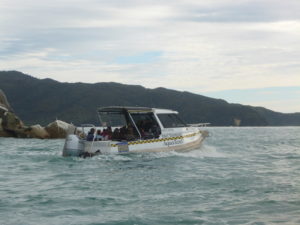
Just as we had done in Hiva Oa Harbour back in the WARM tropics, this vessel backed into the shore, throwing out a bow anchor on the way, until she could lower her ramp onto the beach. Then skipper dashed down the ramp with another anchor and we all stepped ashore onto a golden sandy beach with its compulsory band of ancient driftwood. We knew the first part of the walk was steep uphill out of the bay and after that was easy gentle rises and falls and level ground back to camp.
The path was wide and smoothed by thousands of feet. Pretty fairy falls and stones covered with emerald moss, burnt orange coloured rust granite and the ever noisy cicadas. I reflected I could have wheeled a wheel chair along most of the track. Mother would have liked that for a short while anyway.
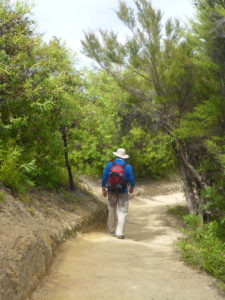
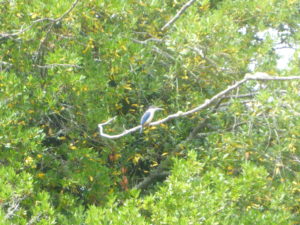
“Do you ever miss Zoonie Rob?” We were sitting looking at bobbing anchored boats in the lee of Adele Island.
“Yes, when I see anchorages like that!” Tasman bay is sheltered from the angry Tasman Sea and hence a favourite place for sailing. It was also a favourite sheltered spot for the early settlers and their farming enterprises. French explorer and navigator D’Urville and his followers settled this area bringing their wine growing skills with them so the area and names are distinctly French.
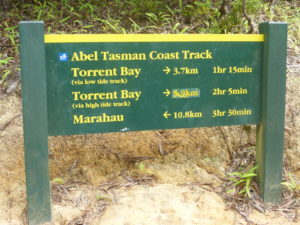
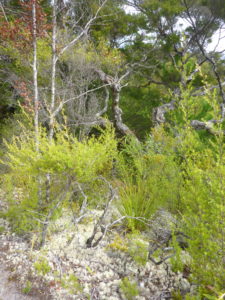
The park is no longer farmed as it is preserved for the recovery of indigenous species of flora and fauna. We were up close and personal with cicadas. Back at Momorangi camp the rangers had set a quiz for children to find dead cicadas on the ground and draw them. Here we did not have to look for them as they were all over the path. Rob and I studied one up close on an eye level branch to see how it makes its noise but we couldn’t see anything moving. Then one landed on Rob’s hat and we laughed.
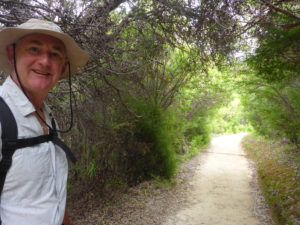
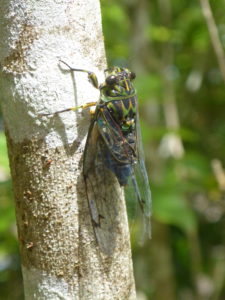

All the way along our track were little paths that led steep down to bays with sandy beaches. We took two, one for water and chocolate and the second for lunch. We didn’t stay for long though as the sand flies decided to lunch on us.
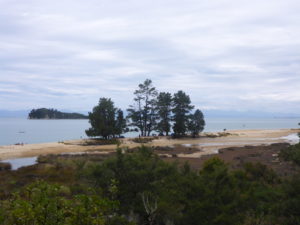
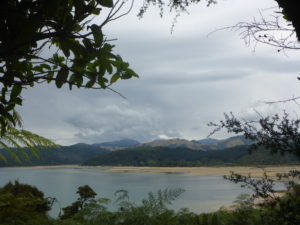
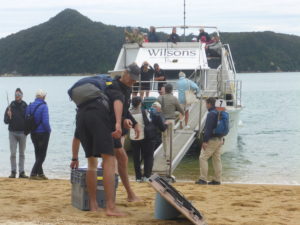
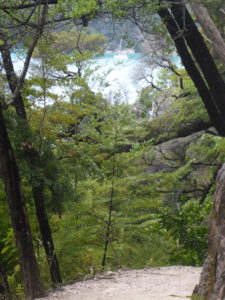
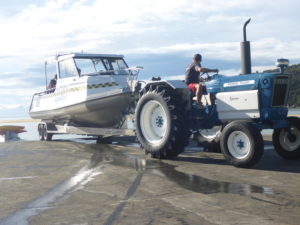
The weather is passing through the buffer year between El Nino and La Nina which is why it is so changeable. NZ folk constantly complain how untypical the weather is. The temperature in Australia in places near the east coast is over 40’ and the sea temperature is 4’ above normal which is a considerable rise and will inevitably affect sea life. Just two days before we started the walk 400 pilot whales stranded themselves on Farewell Spit at the top of South Island. Massive efforts by over 500 volunteers, many of them children, have been made to re-float them or at least keep them wet. We will learn why soon and I wonder whether the sheer number means it is something to do with the climate.
Towards the end of the easy walk we started to imagine things like a pint of cold beer at the bar where, on our arrival the day before, we had enjoyed a vanilla ice cream blended on the spot with local blue berries. The NZ beer is very good but the price! This time £12 a pint, the most expensive yet.
As I was writing my notes for this blog two wide backed horses were being ridden along the raised bank next to us in camp. We exchanged pleasantries then the lead horse stopped in her tracks and would not budge. Her rider explained she had seen the woman preparing breakfast on her table perched immediately ahead on the bank. The horse wanted a look at the breakfast to see if there was anything of interest. Her soft nostrils scanned the food but nothing was to her taste so she agreed, reluctantly, to move on.
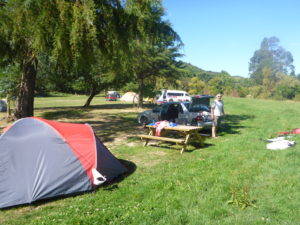
Radio New Zealand told us in an interview that most of NZ’s natural water is now polluted with nitrates and extracts of urea. Intelligent NZ folk assume they need to boil for three minutes any water taken from streams and lakes. One of the rivers near Christchurch will soon be the most polluted in the world, so they say. That’s depressing when the world image of NZ is one of the last pristine wilderness.
Vicky the Volvo has been drinking 1 litres of oil for every 1000kms so the next day we decided it would be prudent to buy a big 5 ltr can just to make sure we had plenty. We were very glad we did a few days later.
On our way back to camp we stopped near the boat launch and inflated our little kayak. The sea enters a little bay protected by a spit of sand and shingle. Off we paddled taking in the surroundings as we watched the water level drop with the receding tide. It was easy to see the sand bars as the water shallowed and we headed for the greener water areas. Despite this poor Rob spent most of the return journey pulling the dinghy over the shallow water. Should have gone in the morning when the tide was full but we weren’t sure Repco would still be open in the afternoon on a Sunday for us to buy the oil.
New Zealanders’ current beefs are the weather and freedom camping. A lady chatted with us as we packed up the kayak. She worked with her son, Daryl, hiring out plastic kayaks. Daryl wasn’t too worried about the weather as he was off to somewhere in Indonesia soon for a few months to collect his new bride. She complained bitterly about the freedom campers. “So you have a camp near you do you?” I asked.
“Oh no, the nearest is at Nelson, did you see them down by the marina?” Yes we had seen them, looking rather uncomfortable and lonely to be honest. “Well they’ve just been booted out of there, and a good thing too.”
“Wasn’t that because the wind blew all their council provided portaloos away? So they have a bad effect on your business?”
“No no they bring in business for us, we do well enough out of them but I don’t see why my rates should be used to help them.” Hmm.
Back at the camp that evening we decided to relax in the living room area, on nice armchairs, so I could catch up on sending photos to the blog. A very fat and immoveable chicken occupied the armchair to one side of me, while Rob engrossed himself in his book on the other.
The next day we were heading south to St Arnaud at the head of Lake Rotoiti in Nelson Lakes National Park.
